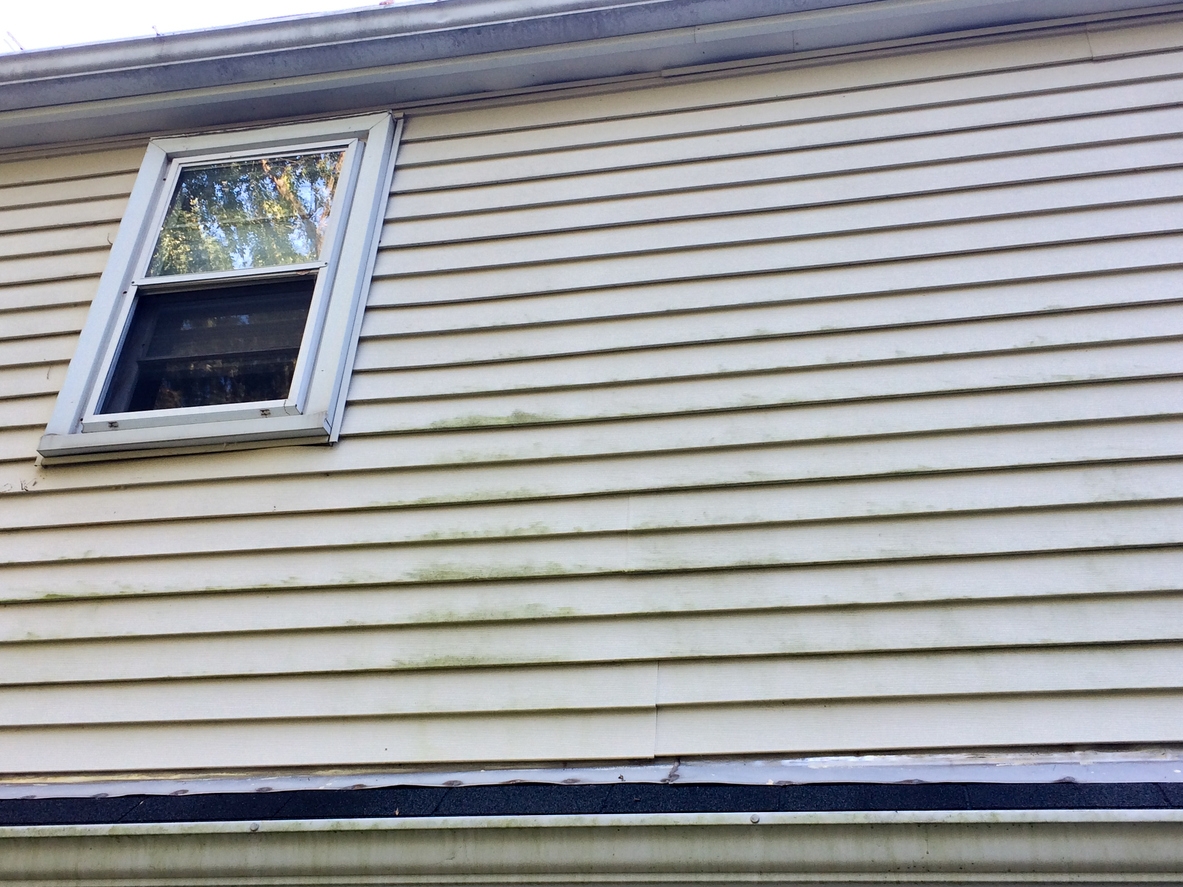Before you start painting a wall, it’s essential to ensure the surface is clean. Proper preparation can make a significant difference in the quality and longevity of your paint job. Let us take a look at some of the best methods for cleaning walls, from removing dust and dirt to tackling tougher stains. These tips will help you achieve a smooth and flawless finish.
Why Cleaning is Essential
Before painting any wall, it’s important to clean the surface thoroughly. This step ensures that the paint adheres properly, providing a smooth and durable finish. Let’s explore how dirt, grease, and grime can impact your painting project and the common issues that arise from painting over dirty walls.
How Dirt, Grease, and Grime Affect Paint Adhesion
- Dirt: Dust and dirt particles on the wall can prevent the paint from sticking evenly. This can lead to a blotchy appearance and uneven coverage.
- Grease: Greasy spots, especially common in kitchens, can repel paint. Paint applied over grease may not adhere well, causing peeling or bubbling over time.
- Grime: Built-up grime can create a barrier between the wall and the paint, leading to poor adhesion and an uneven finish.
Common Problems Caused by Painting Over Dirty Walls
- Peeling Paint: When paint doesn’t adhere properly, it can start to peel off soon after application. This often occurs in areas with high grease or dirt accumulation.
- Uneven Finish: Dirt and grime can cause the paint to go on unevenly, resulting in a blotchy or streaky appearance.
- Reduced Durability: Paint applied over dirty surfaces is more likely to chip and wear quickly, reducing the overall lifespan of your paint job.
- Stains and Discoloration: Existing stains can bleed through the new paint, causing discoloration and unsightly marks on the finished surface.
By taking the time to clean your walls thoroughly before painting, you can avoid these common issues and ensure a smooth, long-lasting finish. Proper preparation is key to achieving professional-looking results in any painting project.
Tools and Materials Needed
Before you begin cleaning your walls, gather all the necessary tools and materials to ensure a thorough and efficient job. Having the right supplies on hand will make the process smoother and help you achieve the best results.
Essential Cleaning Supplies
- Sponges: Soft sponges are ideal for gentle cleaning without damaging the wall surface.
- Buckets: Use buckets to mix and hold your cleaning solutions.
- Cleaning Solutions: A mild detergent mixed with warm water works well for general cleaning. For more stubborn dirt, consider a stronger all-purpose cleaner.
- Microfiber Cloths: These are excellent for dusting and wiping down surfaces without leaving lint behind.
Optional Tools for Tough Stains
- Scrub Brushes: For areas with tough stains or heavy grime, a scrub brush with stiff bristles can help remove the buildup.
- Degreasers: In kitchens or other areas prone to grease, a degreaser can effectively break down and remove greasy spots.
- Magic Erasers: These are great for removing scuffs, crayon marks, and other stubborn stains without damaging the paint or wall surface.
Safety Equipment and Precautions
- Gloves: Wear rubber or latex gloves to protect your hands from harsh cleaning chemicals and prolonged exposure to water.
- Goggles: Safety goggles can protect your eyes from splashes of cleaning solutions.
- Ventilation: Ensure the area is well-ventilated, especially when using strong cleaners or chemicals. Open windows and doors or use fans to circulate air.
- Ladder: If you need to reach high spots, use a sturdy ladder and follow safety guidelines to avoid accidents.
By having these tools and materials ready, you can efficiently clean your walls, ensuring a smooth and clean surface for painting. Proper preparation not only saves time but also enhances the quality and durability of your paint job.
General Cleaning Method
Cleaning your walls before painting is a straightforward process when done correctly. Follow this step-by-step guide to ensure your walls are clean and ready for a fresh coat of paint.
Step-by-Step Guide for General Wall Cleaning
- Prepare the Area: Move furniture away from the walls and cover the floor and any remaining furniture with drop cloths to protect them from cleaning solutions.
- Dust the Walls: Use a dry microfiber cloth or a vacuum with a brush attachment to remove loose dust and cobwebs from the wall surface.
- Mix Cleaning Solution: Fill a bucket with warm water and add a few drops of mild dish soap. Stir the solution gently to create suds.
- Wipe Down the Walls: Dip a sponge into the soapy water, wring out excess liquid, and gently wipe the walls in a circular motion. Start from the top and work your way down to prevent streaks.
- Rinse the Walls: After cleaning a section, rinse the sponge in clean water, wring it out, and wipe the area again to remove any soap residue.
- Dry the Walls: Use a dry microfiber cloth to pat the walls dry. Ensure the surface is completely dry before proceeding to painting.
Best Practices for Using Soap and Water
- Use Mild Detergents: Harsh chemicals can damage the wall surface. Stick to mild dish soap or a gentle all-purpose cleaner.
- Avoid Excess Water: Too much water can seep into the walls and cause damage, especially if the walls are porous or have small cracks. Always wring out the sponge or cloth well before wiping.
- Work in Sections: Clean small sections at a time to ensure thorough cleaning and to prevent the water from drying on the wall surface.
Tips for Avoiding Damage to the Wall Surface
- Test a Small Area: Before cleaning the entire wall, test your cleaning solution on a small, inconspicuous area to ensure it doesn’t damage or discolor the paint.
- Use Gentle Tools: Avoid using abrasive scrubbers or brushes that can scratch or damage the wall surface. Soft sponges and microfiber cloths are ideal for most cleaning tasks.
- Be Gentle: Apply gentle pressure when wiping the walls. Aggressive scrubbing can remove paint or cause dents and scratches.
By following these guidelines, you can effectively clean your walls without causing any damage, ensuring they are ready for a fresh coat of paint. Proper cleaning sets the stage for a smooth, even, and long-lasting paint finish.
Dealing with Stubborn Stains
While general cleaning is often sufficient for most walls, some stains require more effort to remove. Tackling stubborn stains effectively ensures a clean surface for painting and helps avoid issues like discoloration or poor paint adhesion.
Identifying Common Stubborn Stains
- Grease and Oil: Common in kitchens, grease, and oil stains can be tough to remove with just soap and water.
- Crayon and Marker: If you have children, crayon and marker stains can be a frequent issue.
- Mildew and Mold: These stains are often found in bathrooms and damp areas.
- Nicotine and Smoke: Stains from cigarette smoke can be particularly challenging to remove.
Steps for Removing Stubborn Stains
1. Prepare the Surface: As with general cleaning, move furniture and cover floors to protect them from cleaning solutions.
2. Apply a Stronger Cleaner:
- For Grease and Oil: Use a degreaser or a mixture of baking soda and water. Apply the solution to the stain and let it sit for a few minutes before scrubbing gently with a soft brush.
- For Crayon and Marker: Magic erasers or a paste made from baking soda and water can help. Rub the paste on the stain using a circular motion until the mark is removed.
- For Mildew and Mold: A solution of one part bleach to three parts water is effective. Apply with a sponge, let it sit for a few minutes, and then scrub gently. Rinse thoroughly with clean water.
- For Nicotine and Smoke: Use a mixture of vinegar and water or a specialized smoke stain remover. Apply with a sponge and rinse well after cleaning.
3. Rinse Thoroughly: After treating the stain, rinse the area with clean water to remove any residue from the cleaning solution.
4. Dry the Area: Use a dry microfiber cloth to pat the cleaned area dry. Ensure the wall is completely dry before painting.
Best Practices for Tough Stains
- Test Cleaners First: Always test a small, hidden area with your chosen cleaner to ensure it doesn’t damage or discolor the wall.
- Use Appropriate Tools: Soft brushes and non-abrasive sponges are best to avoid scratching or damaging the wall surface.
- Ventilate the Area: When using strong cleaners or bleach solutions, ensure the room is well-ventilated to avoid inhaling fumes.
By following these steps and best practices, you can effectively remove stubborn stains and prepare your walls for a fresh coat of paint. A clean, stain-free surface is key to achieving a professional and long-lasting paint job.
Preparing the Wall After Cleaning
Once you’ve thoroughly cleaned your walls, it’s important to take additional steps to prepare the surface for painting. Proper preparation ensures the paint adheres well and results in a smooth, professional finish.
Inspecting the Wall
- Check for Residual Stains: After cleaning, inspect the walls for any remaining stains or marks. If you find any, repeat the cleaning process for those areas.
- Look for Damage: Examine the wall for cracks, holes, or any other imperfections that might need repair.
Repairing Imperfections
- Fill Holes and Cracks: Use a spackling compound or wall filler to fill in any holes or cracks. Apply the compound with a putty knife, smooth it out, and allow it to dry completely.
- Sand the Surface: Once the filler is dry, sand the repaired areas with fine-grit sandpaper until they are smooth and flush with the rest of the wall. Wipe away any dust with a damp cloth.
- Prime Repairs: Apply a coat of primer to the repaired areas to ensure even paint coverage. This is especially important for larger repairs or if the original wall color is significantly different from the new paint color.
Final Preparation Steps
- Lightly Sand the Wall: For a smooth finish, lightly sand the entire wall with a fine-grit sandpaper. This step helps remove any remaining imperfections and provides a better surface for the paint to adhere to.
- Dust the Wall Again: After sanding, use a vacuum or a microfiber cloth to remove any dust from the wall. Even small particles can affect the quality of your paint job.
- Mask and Protect: Use painter’s tape to mask off areas you don’t want to paint, such as trim, baseboards, and ceilings. Cover the floor and any remaining furniture with drop cloths or plastic sheeting to protect them from paint splatters.
Applying Primer
- Choose the Right Primer: Depending on the condition of your wall and the type of paint you plan to use, choose a suitable primer. Primer helps seal the surface, covers any stains, and provides a uniform base for the paint.
- Apply Evenly: Use a roller or brush to apply an even coat of primer to the wall. Allow the primer to dry completely according to the manufacturer’s instructions before painting.
By following these steps to prepare your wall after cleaning, you can ensure a smooth, even surface that’s ready for painting. Proper preparation is essential for achieving a high-quality, long-lasting paint job that looks professional and beautiful.
Conclusion
Properly cleaning and preparing your walls before painting is crucial for achieving a smooth, long-lasting finish. By following these steps, you can ensure your paint adheres well and looks professional. If you need assistance or want a professional touch, contact Custom Painting, Inc. at 925-686-0903 or fill out our contact form. We’re here to help with all your painting needs.




